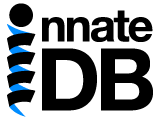| Homo sapiens Gene: WISP1 | |||||||||||||||||||
|---|---|---|---|---|---|---|---|---|---|---|---|---|---|---|---|---|---|---|---|
| Summary | |||||||||||||||||||
| InnateDB Gene | IDBG-36325.6 | ||||||||||||||||||
| Last Modified | 2014-10-13 [Report errors or provide feedback] | ||||||||||||||||||
| Gene Symbol | WISP1 | ||||||||||||||||||
| Gene Name | WNT1 inducible signaling pathway protein 1 | ||||||||||||||||||
| Synonyms | |||||||||||||||||||
| Species | Homo sapiens | ||||||||||||||||||
| Ensembl Gene | ENSG00000104415 | ||||||||||||||||||
| Encoded Proteins |
WNT1 inducible signaling pathway protein 1
WNT1 inducible signaling pathway protein 1
WNT1 inducible signaling pathway protein 1
WNT1 inducible signaling pathway protein 1
WNT1 inducible signaling pathway protein 1
|
||||||||||||||||||
| Protein Structure | |||||||||||||||||||
| Useful resources | Stemformatics EHFPI ImmGen | ||||||||||||||||||
| Entrez Gene | |||||||||||||||||||
| Summary |
This gene encodes a member of the WNT1 inducible signaling pathway (WISP) protein subfamily, which belongs to the connective tissue growth factor (CTGF) family. WNT1 is a member of a family of cysteine-rich, glycosylated signaling proteins that mediate diverse developmental processes. The CTGF family members are characterized by four conserved cysteine-rich domains: insulin-like growth factor-binding domain, von Willebrand factor type C module, thrombospondin domain and C-terminal cystine knot-like domain. This gene may be downstream in the WNT1 signaling pathway that is relevant to malignant transformation. It is expressed at a high level in fibroblast cells, and overexpressed in colon tumors. The encoded protein binds to decorin and biglycan, two members of a family of small leucine-rich proteoglycans present in the extracellular matrix of connective tissue, and possibly prevents the inhibitory activity of decorin and biglycan in tumor cell proliferation. It also attenuates p53-mediated apoptosis in response to DNA damage through activation of the Akt kinase. It is 83% identical to the mouse protein at the amino acid level. Multiple alternatively spliced transcript variants have been identified. [provided by RefSeq, Mar 2011] |
||||||||||||||||||
| Gene Information | |||||||||||||||||||
| Type | Protein coding | ||||||||||||||||||
| Genomic Location | Chromosome 8:133191039-133230344 | ||||||||||||||||||
| Strand | Forward strand | ||||||||||||||||||
| Band | q24.22 | ||||||||||||||||||
| Transcripts |
|
||||||||||||||||||
| Interactions | |||||||||||||||||||
| Number of Interactions |
This gene and/or its encoded proteins are associated with 1 experimentally validated interaction(s) in this database.
|
||||||||||||||||||
| Gene Ontology | |||||||||||||||||||
Molecular Function |
|
||||||||||||||||||
| Biological Process |
|
||||||||||||||||||
| Cellular Component |
|
||||||||||||||||||
| Orthologs | |||||||||||||||||||
|
Species
Mus musculus
Bos taurus
|
Gene ID
Gene Order
Not yet available
|
||||||||||||||||||
| Cross-References | |||||||||||||||||||
| SwissProt | |||||||||||||||||||
| TrEMBL | |||||||||||||||||||
| UniProt Splice Variant | |||||||||||||||||||
| Entrez Gene | |||||||||||||||||||
| UniGene | Hs.492974 | ||||||||||||||||||
| RefSeq | NM_001204869 NM_001204870 NM_003882 NM_080838 | ||||||||||||||||||
| HUGO | |||||||||||||||||||
| OMIM | |||||||||||||||||||
| CCDS | CCDS56555 CCDS56556 CCDS6371 CCDS6372 | ||||||||||||||||||
| HPRD | 16019 | ||||||||||||||||||
| IMGT | |||||||||||||||||||
| EMBL | |||||||||||||||||||
| GenPept | |||||||||||||||||||
| RNA Seq Atlas | |||||||||||||||||||
